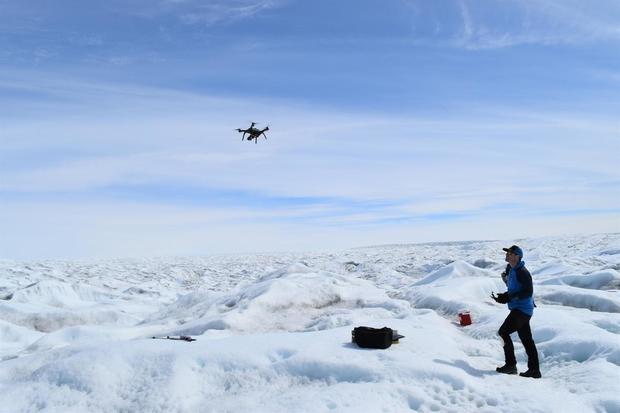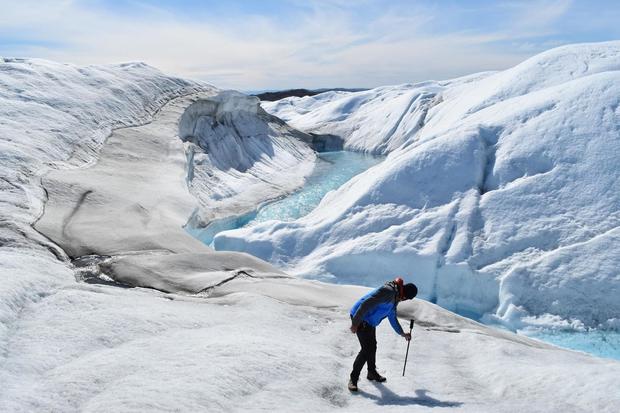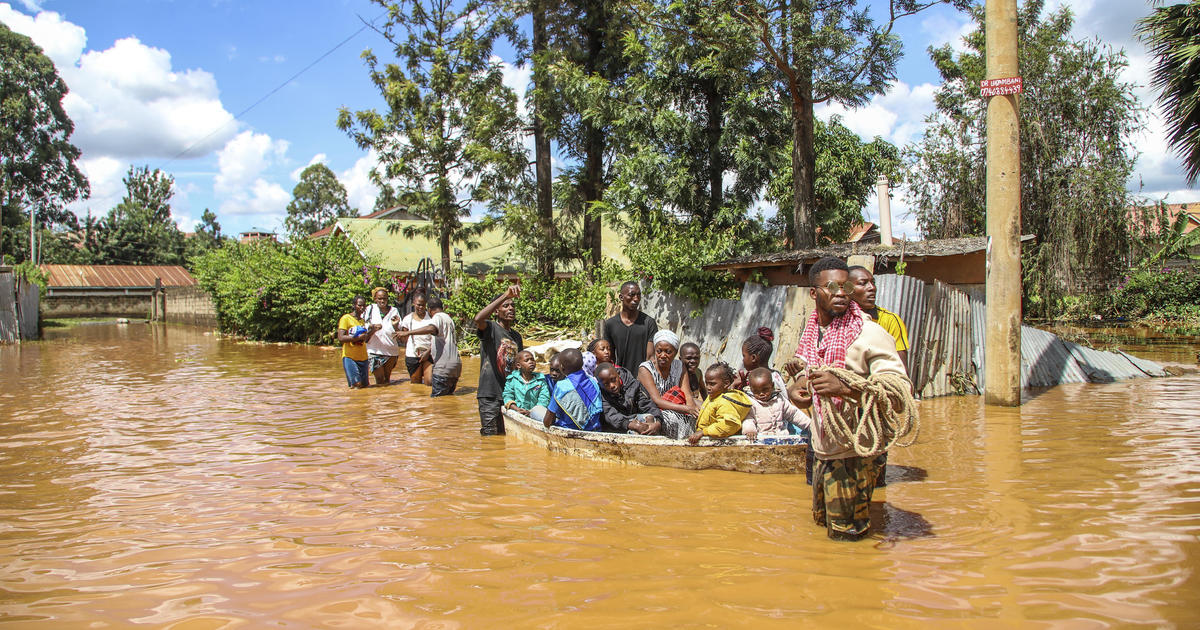Unusual winter rains driving sea level rise in the Arctic
Warmer air is turning what should be snowfall in the Arctic to rainfall, which could accelerate sea level rise beyond current predictions. Researchers are warning that rainy weather is becoming increasingly common over parts of the Greenland ice sheet, triggering sudden melting events that are eating away at the ice and priming the surface for more widespread melting in the future.
A study published Thursday in the scientific journal Cryosphere says some parts of the ice sheet are even receiving rain in the winter -- a new phenomenon that will spread as the Earth's climate continues to warm.
Greenland has been losing ice in recent decades due to progressive warming. Since about 1990, average temperatures over the ice sheet have increased by as much as 3.2 degrees in the summer, and up to 5.4 degrees over the winter. The 660,000-square-mile sheet is now believed to be losing about 270 billion tons of ice each year.
Most of the ice loss was, until recently, thought to come from icebergs calving, or breaking off into the ocean. But direct meltwater runoff has now come to dominate, accounting for about 70 percent of the loss, the study published in Cryosphere says. Rainy weather, the study's authors say, is increasingly the trigger for that runoff.
The researchers combined satellite imagery with on-the-ground weather observations from 1979 to 2012 in order to pinpoint what was triggering melting in specific places. Satellites are used to map melting in real time because their imagery can distinguish snow from liquid water. The scientists also used a camera-equipped drone to map the area.
For the study, 20 automated weather stations spread across the ice sheet offered data on temperature, wind and precipitation. Combining the data sets, the researchers zeroed in on more than 300 events in which they found the initial trigger for melting was rainy weather.
"That was a surprise to see," said the study's lead author, Marilena Oltmanns, of Germany's GEOMAR Centre for Ocean Research. She said that over the study period, melting associated with rain doubled during summer and tripled in the winter.
Total precipitation over the ice sheet did not change; what did change was the form of precipitation. All told, the researchers estimate that nearly a third of total runoff they observed was initiated by rainfall.
Melting can be driven by a number of factors, but the introduction of liquid water is one of the most powerful, said Mark Tedesco, a glaciologist at Columbia University's Lamont-Doherty Earth Observatory and co-author of the study.
Warm air, of course, can melt ice directly, but is not very efficient by itself, he said. But warmer temperatures produce cascading effects, one being the likelihood of rain falling when snow typically should.
Liquid water carries a great deal of heat, and when it soaks into a snowy surface, it melts the snow around it, releasing more energy. Meanwhile, the warmer air that brought the rain often forms clouds, which hold the heat closer to the Earth's surface.
Between 1993 and 2014, global sea-level rise accelerated from about 2.2 millimeters (0.19 inches) per year to 3.3 millimeters (0.13 inches), and much of that acceleration is thought to be due to melting of the Greenland ice sheet. Projections of sea-level rise for the end of this century generally range from two to four feet, but most of those projections don't account for the myriad conditions impacting the ice in Greenland, or the fate of the much larger ice mass in Antarctica.
CBS News correspondent Mark Phillips joined NASA scientists last fall as they conducted "Operation Icebridge," a surveillance mission to study the Antarctic ice sheet.
"The Antarctic ice sheet is discharging more than two Olympic sized swimming pools worth of ice, into the ocean, every second," the mission's alarmed chief scientist Joe MacGregor told Phillips.





